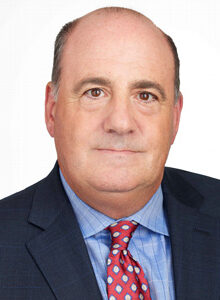Autism spectrum disorder (ASD) is a multifaceted neurodevelopmental condition characterized by challenges in social interaction, communication, and limited or repetitive behaviors. Individuals with ASD might also experience sensory sensitivities, such as heightened responses to lights, sounds, textures, and other environmental stimuli. These sensitivities can make traditional health care settings overwhelming and distressing for autistic patients and their families, potentially leading to increased anxiety and difficulty accessing necessary and critical medical care. Creating sensory-friendly health care environments for autistic patients is crucial to ensure their comfort, safety, and well-being during medical visits.

To help illustrate what this experience can be like, I am introducing the character Ann, who is diagnosed with ASD and experiences anxiety when going to the dentist. Due to this anxiety, her parents often cancel her appointments due to “acting out” behavior and frequently avoid scheduling appointments due to embarrassment. Ann’s parents also habitually research remedies online, which often leads to exacerbation of her health conditions and the development of more serious health issues.
Sensory-friendly health care environments should minimize sensory overload and provide a calming and supportive atmosphere. Implementing sensory-friendly practices in health care settings offers numerous benefits for autistic patients, including:
- Reduced stress and anxiety during medical visits
- Improved access to essential health care services
- Enhanced patient satisfaction and overall experience
- Increased trust in health care providers
- Better health outcomes due to decreased barriers to care
By prioritizing the creation of sensory-friendly health care environments, medical facilities can demonstrate their commitment to inclusivity and accessibility for individuals with autism spectrum disorder.
Health care facilities can implement sensory modifications to create a more accommodating environment for autistic patients. This may include using soft lighting, minimizing loud noises, providing comfortable seating options, and offering sensory-friendly waiting areas that incorporate calming elements such as acoustic tiles, weighted blankets, headphones, or fidget toys.
Ann’s dental office made special appointment accommodations for her. This included early morning appointments to avoid wait times and large crowds in the waiting area. The office manager also played soothing music and kept the lights low.
Effective communication is also essential when interacting with autistic patients. Health care providers should receive training in communicating clearly and directly while being mindful of the individual’s sensory needs. Visual supports, such as picture schedules or social stories, can also aid in conveying information and reducing anxiety during medical appointments.
Ann’s social story about going to the dentist can help her understand that feeling anxious is okay, but hitting yourself or yelling is not okay. Ann’s story can suggest prosocial alternatives she can do when anxious, such as diaphragmatic breathing or listening to music through headphones.
Work closely with families to understand the specific sensory needs of the individual and incorporate their insights into the development of sensory-friendly practice and environment. It is also helpful to seek feedback from autistic individuals and their families to continuously improve and refine sensory-friendly initiatives within the health care setting.
Comprehensive training programs should be implemented to educate health care staff about autism awareness, sensory sensitivities, and best practices for interacting with autistic individuals. This training can help staff members develop a deeper understanding of the unique needs of autistic patients and enhance their ability to provide compassionate care. One such training is available at Rutgers Biomedical and Health Science Center for Autism Research, Education and Services.
Flexibility in medical procedures can be beneficial for accommodating the specific needs of autistic patients. For example, allowing additional appointment times, offering alternative methods for taking vital signs or conducting examinations, and respecting individual preferences regarding touch or proximity can contribute to a more positive health care experience.
Ann’s dentist spoke clearly about each step during the appointment and allowed Ann to hold the dental tool while explaining its use. The dentist also allowed extra time for Ann to process the information before implementation. The dentist provided positive reinforcement and encouragement to use her relaxation breathing techniques throughout the appointment, with rewards for success after the completion of each step.
Health care facilities can offer supportive resources such as visual schedules, noise-canceling headphones, or designated quiet spaces to help autistic patients manage sensory challenges while receiving medical care.
Cultivating sensory-friendly health care environments for autistic patients requires a multifaceted approach that addresses sensory modifications, communication strategies, staff training, flexibility in procedures, and the provision of supportive resources. By implementing these measures, health care facilities can significantly improve the overall experience for autistic individuals seeking medical care while promoting inclusivity and understanding within the health care system.
Resources for Additional Information
- Centers for Disease Control and Prevention (CDC): The CDC provides evidence-based guidelines and resources related to autism spectrum disorder (ASD) and health care accommodations for individuals with ASD.
- Autism Speaks: As a leading advocacy organization for autism awareness and support, Autism Speaks offers valuable insights into creating sensory-friendly environments in various settings, including health care facilities.
- National Institute of Mental Health (NIMH): NIMH researches autism spectrum disorder and provides authoritative information on best practices for accommodating individuals with ASD in health care settings.
- Rutgers Center for Autism Research, Education, & Services: Rutgers is responsible for coordinating and fostering basic and clinical research focused on diagnosing, treating, and supporting patients with ASD.
Richard Anemone joined the Institute of Community Living (ICL) in November 2019 as the Senior Vice President of its I/DD division, which includes 13 small group residences funded by the New York State Office of People With Developmental Disabilities (OPWDD). Richard has more than 30 years of experience in the mental health field. He has worked with both adults and children with intellectual developmental disorders as well as psychiatric disorders in residential and day treatment programs, school settings, clinics, and hospitals. He understands the complexities of serving this population – having begun his career as a direct support professional and later worked as an administrator and clinician. Richard has a Master’s Degree in Psychology and is licensed as a mental health counselor in New York State. In his private practice, Richard provides counseling, training, presentations, and technical support to individuals, families, groups, and organizations.







The article, Creating Sensory-Friendly Healthcare Environments for Autistic Patients, is an excellent introduction to the topic. Unfortunately, in the resources section it recommends Autism Speaks. This hate group is highly unlikely to be helpful and will likely fill up with naive user with false and hurtful disinformation. A more useful organization would be A.S.A.N., the Autism Self Advocacy Network.
It would be nice to see a similar article targeting those medical practices that treat autistic adults. Many of the points made in this article apply to adults but that fact gets lost in the child centered focus. Also, if there are adult specific suggestions it would be great to be aware of them.
Groups that are against autism speaks, or any other autism groups need to meet with all these groups In one large summit meeting two address any concerns. But we all have to come together as one group and stop fighting amongst ourselves or nothing gonna get done. Let’s combine all the groups into one. We being autistic people are individually together as one consciousness With the same purpose. And as to educate, those are normal or don’t understand us. And normals cannot get away from us because we are the new normal or will soon be.
My 16-year-old autistic son injured his foot recently. We thought it might be broken and due to the time of night, the ER was my only option. Unfortunately, it was very crowded and very warm in there. My son was becoming increasingly upset. They finally called him back to triage him and he became very upset when he had to return to the waiting room. I asked how long it would be and the nurse said probably quite a while. My son started crying and said, “I can’t go back there, and I won’t go out there”. She was very curt and said he has to wait his turn or leave. He again cried, “I can’t go back out there!” and she said “Well, then I’ll have to call security to remove you”. I was dumbfounded. I had already explained he is Autistic, and has a lot of sensory sensitivities (incl noise, too a crowded room, a warm room etc.) I mentioned this again, along with his pain tolerance being low and he was having a hard time dealing with the pain. She just didn’t care. He began crying very loud and she began getting louder and more insistent too. I asked her to get me a wheelchair and I would take him home. Another nurse finally came in who was a bit more understanding. They put a chair for him in a little hallway inside of the ER where it quiet, not crowded and cooler. This worked. We got quite a few dirty looks and the ER doctor who finally saw him seemed annoyed as well. Maybe he heard about the situation? The general experience was not good all around, and it’s not even close to the first time – I try to avoid ERs as much as possible. ALL medical facilities, ERs, Urgent Care Clinics, Hospitals, Surgery Centers etc. need special training and accommodations for Autistic and other neurodivergent patients.
[…] sensory-friendly environments, both at home and in educational settings, is essential for managing sensory overload in […]
[…] https://autismspectrumnews.org/creating-sensory-friendly-health-care-environments-for-autistic-patie… […]